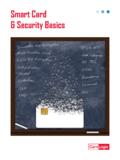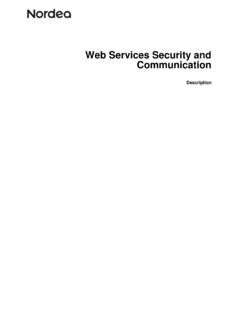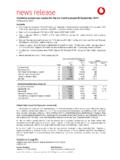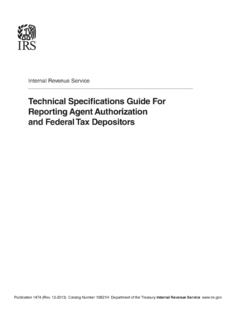Transcription of Securing - TICUA
1 Securing Tennessee's Future learning from closed institutions : Indicators of Risk for Small Private Colleges and Universities learning from closed institutions : Indicators of Risk for Small Private Colleges and Universities Dawn Lyken-Segosebe Justin Cole Shepherd Higher Education Leadership and Policy Studies Peabody College of Education and Human Development Vanderbilt University July 2013. Paper prepared for the Tennessee Independent Colleges and Universities Association ( TICUA ). DAWN LYKEN-SEGOSEBE is a doctoral student in the Higher Education Leadership and Policy Studies program at Vanderbilt University.
2 Her research focuses on faculty (codes of conduct, scholarship, and interaction with students), and the college outcomes of commuter students. Previously, she lectured in the Economics departments of the University of Guyana and the United Arab Emirates University, and was a Principal Technical Education Officer at the Ministry of Education in Botswana. JUSTIN COLE SHEPHERD is a doctoral candidate in the Higher Education Leadership and Policy Studies program at Vanderbilt University. His research focuses on budgeting, public management, governance, and politics in higher education.
3 Prior to his work at Vanderbilt, he worked as a budget analyst for Broward County, Florida. Introduction For small colleges and universities, risks to their financial health have become a chronic issue in the aftermath of the financial crisis of the early 2000s. Small colleges and universities tend to be among or at serious risk of joining the one-third of higher education institutions that face financial statements significantly weaker than before the recession (Selingo, 2013). Expenses are growing at such a pace that colleges don't have the cash or the revenue to cover them for much longer, says Jeff Denneen, Partner at Bain & Company and head of the management consulting firm's Americas Higher Education practice.
4 A growing number of colleges are in real financial trouble.. Many of the problems surrounding declining revenues can be attributed to issues stemming from enrollment struggles. Moody's 2012 Tuition Survey recognizes that enrollment declines tend to be concentrated in colleges with smaller total enrollment, weak selectivity/yield rates, high tuition dependence, small endowments, and soft regional demographics. Furthermore, private colleges and universities with small enrollments fall among the 97% of the country's 1,600 institutions with endowments less than $1 billion (National Association of College and University Business Officers and Commonfund Institute (2013).)
5 The economic recession has put a strain on endowments, which, on average, reported losses during the 2012. fiscal year (FY2012). This renders small institutions even more tuition-dependent as they have little cushion against unexpected revenue shortfalls through alternate revenue sources (Van Der Werf, 2002). On average, five private 4-year non-profit colleges and universities have closed per year over the last ten years, with as many as 9 institutions closing in 2009 (The Digest of Education Statistics 2013). What lessons can we learn from the closure of these institutions ?
6 What are the key indicators that were common to these institutions ? This paper examines the literature and institutional data on small colleges and universities that closed over the last ten years, seeking to identify the contributing factors to institutional failure and present these as risks to the financial health of small institutions . Challenges to Small institutions The challenges faced by small colleges and universities are presented in the extant literature primarily as case studies. While the literature does not examine recent institutional closures in great detail, the snapshots provided succinctly captures the reasons for their closure.
7 The Chronicle of Higher Education highlights the challenges faced by: Urban College of Boston, 2012 600 students , financial troubles , failed merger with Endicott College , $250,000 deficit (DeSantis, 2012);. Antioch College, 2007 dwindling enrollment and expensive campus maintenance , small endowment of $ million , annual deficit of $5-million for several years . (Carlson, 2007; Fain, 2007; Jaschik, 2007);. William Tyndale College, 2004 college was running out of money and could not operate past December 31 , cannot maintain an enrollment high enough to make ends meet , 292 students (Gravois, 2004).
8 Trinity College, 2000 low enrollment with 225 returning undergraduates , endowment is only about $700,000 , cumulative operating deficit of $ , and its long-term debt stands at about $ (Van der Werf, 2000). 1. The literature indicates that low enrollment, low endowment levels, high debt and deficit positions, and deferred maintenance were challenges common to small colleges and universities at the time of their closure. Low Enrollment Falling enrollment is a real threat for these institutions since tuition, fees, and room and board generally account for two-thirds or more of their revenue (Chabotar, 2010).
9 Falling matriculation figures reduce overall tuition revenue, a situation institutions need to be wary of given that net tuition revenue in recent years has either been flat or falling at 73% of colleges (Selingo, 2013). Low Endowment Levels The deleterious effect of tuition-dependence becomes magnified when institutions are also endowment-dependent. Small institutions depend on endowment and fund-raising as major alternate sources of revenue. Private giving to American colleges in FY2008 was reported at $ billion according to findings of the annual Voluntary Support of Education (VSE) survey.
10 The following year demonstrated a decline of 12% in total giving, the steepest decline in the survey's 50-year history (Chabotar, 2010). However, the February 2013-released VSE survey indicates that philanthropic giving to U. S. colleges and universities grew by a modest percent during FY2012 with total giving reaching $31 billion, nearly recovering to the FY2008. level (Council for the Advancement and Support of Education, 2013). It is unclear whether small colleges and universities are the direct beneficiaries of these philanthropic increases, particularly given that the VSE results indicate the continued decline in the percentage of alumni who contribute to their alma mater.








